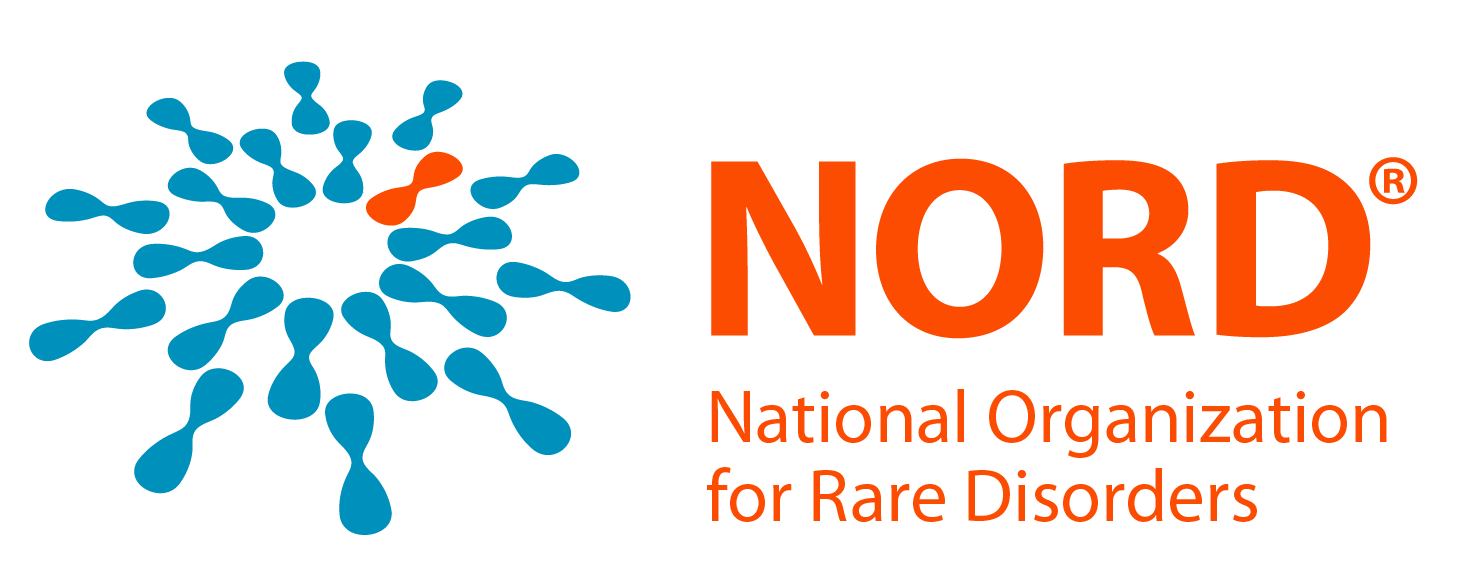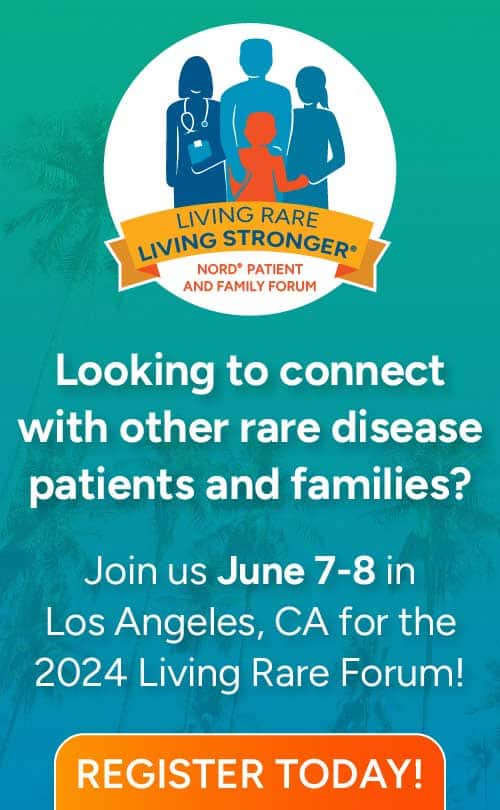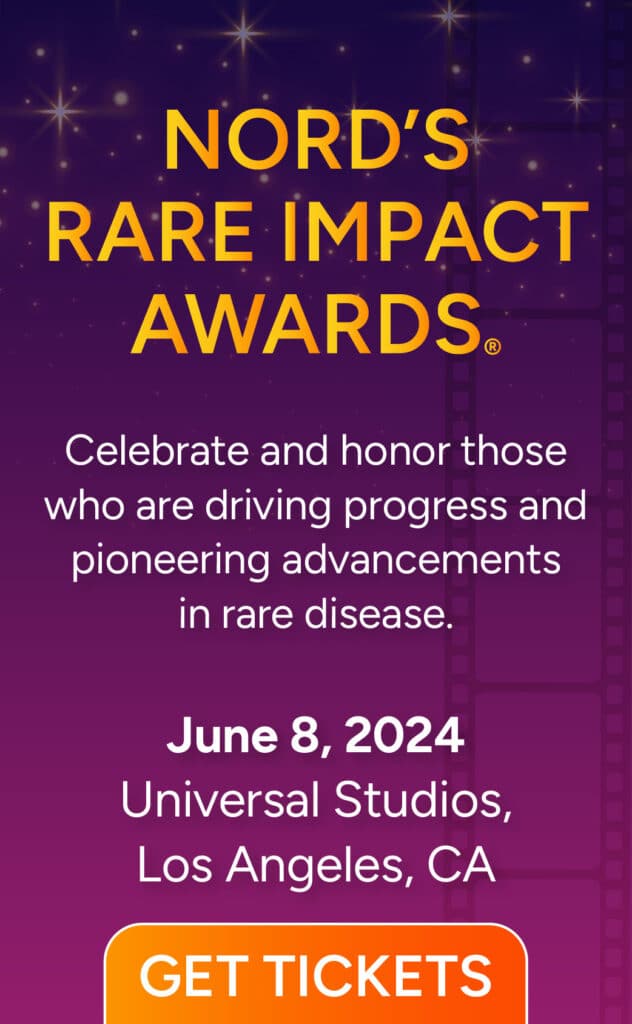Ellis-Van Creveld Syndrome
Print
Last updated:
5/6/2024
Years published: 1992, 2000, 2008, 2012, 2024
Acknowledgment
NORD gratefully acknowledges Brooke Friedman and David Diaz, NORD Editorial Interns from the University of Notre Dame and Dr. Marya Hameed, Department of Radiology, National Institute of Child Health, Karachi, Pakistan, for assistance in the preparation of this report.
Disease Overview
Ellis-Van Creveld syndrome is a rare genetic disorder that is mainly characterized by short limb dwarfism, additional fingers and/or toes (polydactyly), abnormal development of fingernails and, in over half of the patients, congenital heart defects. Nearly 50% of patients die by 18 months of age from cardiopulmonary complications. Motor development and intelligence are usually normal. This disorder is caused by variants in several different genes including the EVC1 and EVC2 genes and occasionally the DYNC2LI1, GLI1, WDR35, PRKACA, PRKACB and SMO genes. Inheritance is autosomal recessive. Treatment is symptom-specific and generally requires a team of medical professionals.
- Next section >
- < Previous section
- Next section >
Synonyms
- chondroectodermal dysplasia
- EVC
- mesoectodermal dysplasia
- < Previous section
- Next section >
- < Previous section
- Next section >
Signs & Symptoms
Individuals with Ellis-Van Creveld syndrome typically have arms and legs that are abnormally short while the head and trunk are normal. Shortened length between the neck and abdomen and a narrow chest may occur. Extra fingers (polydactyly) are present in all patients with this condition and both hands are usually affected. Abnormal development (dysplasia) of fingernails, toenails, hair, teeth and inner lining of the mouth (oral mucosa) may occur.
More than 50% of the patients with Ellis-Van Creveld syndrome are born with malformations of the heart. The most common heart defect is an abnormal opening in the wall between the two upper heart chambers (atrial septal defect). Other types of heart defects have also been reported including ventricular septal defects and patent ductus arteriosus.
Some males with this condition have been described with undescended testicles (cryptorchidism) or an abnormally located opening of the urine canal in the penis (epispadias). Abnormalities in the chest wall, spine and respiratory system have also been reported.
Other frequently reported symptoms include:
Overall
- Restriction of fetal growth (intrauterine growth retardation)
- Left-right reversal of the location of major organs (situs inversus totalis) Eyes, Mouth and Teeth
- Misalignment of the eyes (strabismus)
- Abnormality of the tongue mucous membrane (oral frenum)
- Abnormality of the incisor teeth (conical incisor)
- Underdeveloped teeth (microdontia) or missing teeth (hypodontia) Heart and Lungs
- A reversal of heart location in the chest (dextrocardia)
- Underdeveloped lungs (hypoplasia)
Urinary Tract
- Abnormality of the kidney (renal anomaly)
- Abnormality of the urine duct (ureteral anomalies)
- Abnormal opening of the urine canal on the underside of the penis (hypospadias)
Skeletal
- Fusion of the wrist bones (capitate-hamate fusion)
- Abnormality of the pelvic bone (pelvic girdle)
Less common symptoms include:
- Abnormal female genitalia
- Abnormal bone marrow cells
- Acute leukemia
- Abnormal elbow positioning (cubitus valgus)
- Delayed tooth eruption
- Delayed skeletal maturation
- Shortness of breath (emphysema)
- Wide ureter (hydroureter)
- Intellectual disability
- Abnormality of the lips (thin vermilion border)
- < Previous section
- Next section >
- < Previous section
- Next section >
Causes
Ellis-Van Creveld syndrome is caused by disease-causing variants mainly in two genes called EVC1 and EVC2. These gene variants result in the production of abnormally small EVC1 and EVC2 proteins. While the exact function of these proteins is unclear, they are found on the cilia of the cell and ultimately assist in the proper development of body parts including bones and teeth. Some affected individuals do not have variants in these genes, and it is likely that variants in other genes (DYNC2LI1, GLI1, WDR35, PRKACA, PRKACB and SMO) also cause the condition. The DYNC2LI1 gene encodes a protein that assists in neurotransmitter release and provides architectural support for neurons. The GLI1 gene is a transcriptional regulator involved in the development of different types of cancer. The WDR35, PRKACA, PRKACB, and SMO genes provide instructions for making proteins that are involved in the formation and maintenance of cilia (microscopic, finger-like projections that stick out from the surface of cells).
Ellis-Van Creveld syndrome is inherited in an autosomal recessive pattern. Recessive genetic disorders occur when an individual inherits a disease-causing gene variant from each parent. If an individual receives one normal gene and one disease-causing gene variant, the person will be a carrier for the disease, but usually will not show symptoms. The risk for two carrier parents to both pass the gene variant and have an affected child is 25% with each pregnancy. The risk of having a child who is a carrier like the parents is 50% with each pregnancy. The chance for a child to receive normal genes from both parents is 25%. The risk is the same for males and females.
- < Previous section
- Next section >
- < Previous section
- Next section >
Affected populations
Ellis-Van Creveld syndrome occurs in many ethnic groups throughout the world and affects males and females equally. This condition has been reported in approximately 150 individuals. It is more common in the Old Order Amish population of Lancaster County, Pennsylvania and in the native population of Western Australia.
- < Previous section
- Next section >
- < Previous section
- Next section >
Diagnosis
Ellis-Van-Creveld syndrome is diagnosed by the observation of short stature, slow growth, skeletal abnormalities and dental malformations determined by imaging techniques and sometimes teeth present at birth (natal teeth). Molecular genetic testing for the EVC1, EVC2, GLI1, DYNC2LI1, WDR35, PRKACA, PRKACB, and SMO genes is available on a research basis only. Prenatal diagnosis is possible by ultrasound.
- < Previous section
- Next section >
- < Previous section
- Next section >
Standard Therapies
Treatment
It is often necessary to treat respiratory distress that results from a narrow chest and/or heart failure shortly after birth. Natal teeth should be removed because they can interfere with feeding.
The treatment of Ellis-Van Creveld syndrome is directed toward the specific symptoms that are apparent in each individual. Such treatment may require the coordinated efforts of a team of medical professionals, such as pediatricians, surgeons, cardiologists, dentists, pulmonologists, orthopedists, urologists, physical and occupational therapists and/or other health care professionals.
Genetic counseling is recommended for affected individuals and their families.
- < Previous section
- Next section >
- < Previous section
- Next section >
Clinical Trials and Studies
Information on current clinical trials is posted on the Internet at www.clinicaltrials.gov. All studies receiving U.S. government funding, and some supported by private industry, are posted on this government website.
For information about clinical trials being conducted at the NIH Clinical Center in Bethesda, MD, contact the NIH Patient Recruitment Office:
Tollfree: (800) 411-1222
TTY: (866) 411-1010
Email: prpl@cc.nih.gov
Some current clinical trials also are posted on the following page on the NORD website: https://rarediseases.org/for-patients-and-families/information-resources/info-clinical-trials-and-research-studies/
For information about clinical trials sponsored by private sources, contact: www.centerwatch.com
For information about clinical trials conducted in Europe, contact: https://www.clinicaltrialsregister.eu/
- < Previous section
- Next section >
- < Previous section
- Next section >
References
JOURNAL ARTICLES
Aubert-Mucca M, Huber C, Baujat G, et al. Ellis-Van Creveld syndrome: clinical and molecular analysis of 50 individuals. J Med Genet. 2023;60(4):337-345. doi:10.1136/jmg-2022-108435
Weiner DS, Jonah D, Leighley B, Dicintio MS, Holmes Morton D, Kopits S. Orthopaedic manifestations of chondroectodermal dysplasia: the Ellis-van Creveld syndrome. J Child Orthop. 2013;7(6):465-476. doi:10.1007/s11832-013-0541-4
Tompson SW, Ruiz-Perez VL, Blair HJ, et al. Sequencing EVC and EVC2 identifies mutations in two-thirds of Ellis-van Creveld syndrome patients. Hum Genet. 2007;120(5):663-670. doi:10.1007/s00439-006-0237-7
Baujat G, Le Merrer M. Ellis-Van Creveld syndrome. Orphanet J Rare Dis. 2007;2:27. doi:10.1186/1750-1172-2-27
Ye X, Song G, Fan M, et al. A novel heterozygous deletion in the EVC2 gene causes Weyers acrofacial dysostosis. Hum Genet. 2006; 119:199-205.
McKusick VA. Ellis-van Creveld syndrome and the Amish. Nat Genet. 2000;24(3):283-6.
Ruiz-Perez VL, Ide SE, Strom TM, et al. Mutations in a new gene in Ellis-van Creveld syndrome and Weyers acrodental dysostosis. Nature Genet. 2000;24:283-286.
Goldblatt J, Minutillo C, Pemberton P, Hurst J. Ellis-van Creveld syndrome in a western Australian Aboriginal community: postaxial polydactyly as a heterozygous manifestation? Med J Aust. 1992; 157:271.
INTERNET
Tan W, Lin A, Keppler-Noreuil K. Cranioectodermal Dysplasia. 2013 Sep 12 [Updated 2022 Dec 15]. In: Adam MP, Feldman J, Mirzaa GM, et al., editors. GeneReviews® [Internet]. Seattle (WA): University of Washington, Seattle; 1993-2024. Available from: https://www.ncbi.nlm.nih.gov/books/NBK154653/ Accessed April 18, 2024.
Ellis-Van Creveld syndrome. Genetic and Rare Diseases Information Center (GARD). https://rarediseases.info.nih.gov/diseases/1301/ellis-van-creveld-syndrome Accessed April 18, 2024.
EVC gene: MedlinePlus Genetics. Dec 1, 2012. https://medlineplus.gov/genetics/gene/evc/ Accessed April 18, 2024.
Defendi GL. Ellis-Van Creveld syndrome. Medscape. Updated: Sep 6, 2019. http://emedicine.medscape.com/article/943684-overview Accessed April 18, 2024.
- < Previous section
- Next section >
Programs & Resources
RareCare® Assistance Programs
NORD strives to open new assistance programs as funding allows. If we don’t have a program for you now, please continue to check back with us.
Additional Assistance Programs
MedicAlert Assistance Program
NORD and MedicAlert Foundation have teamed up on a new program to provide protection to rare disease patients in emergency situations.
Learn more https://rarediseases.org/patient-assistance-programs/medicalert-assistance-program/Rare Disease Educational Support Program
Ensuring that patients and caregivers are armed with the tools they need to live their best lives while managing their rare condition is a vital part of NORD’s mission.
Learn more https://rarediseases.org/patient-assistance-programs/rare-disease-educational-support/Rare Caregiver Respite Program
This first-of-its-kind assistance program is designed for caregivers of a child or adult diagnosed with a rare disorder.
Learn more https://rarediseases.org/patient-assistance-programs/caregiver-respite/



